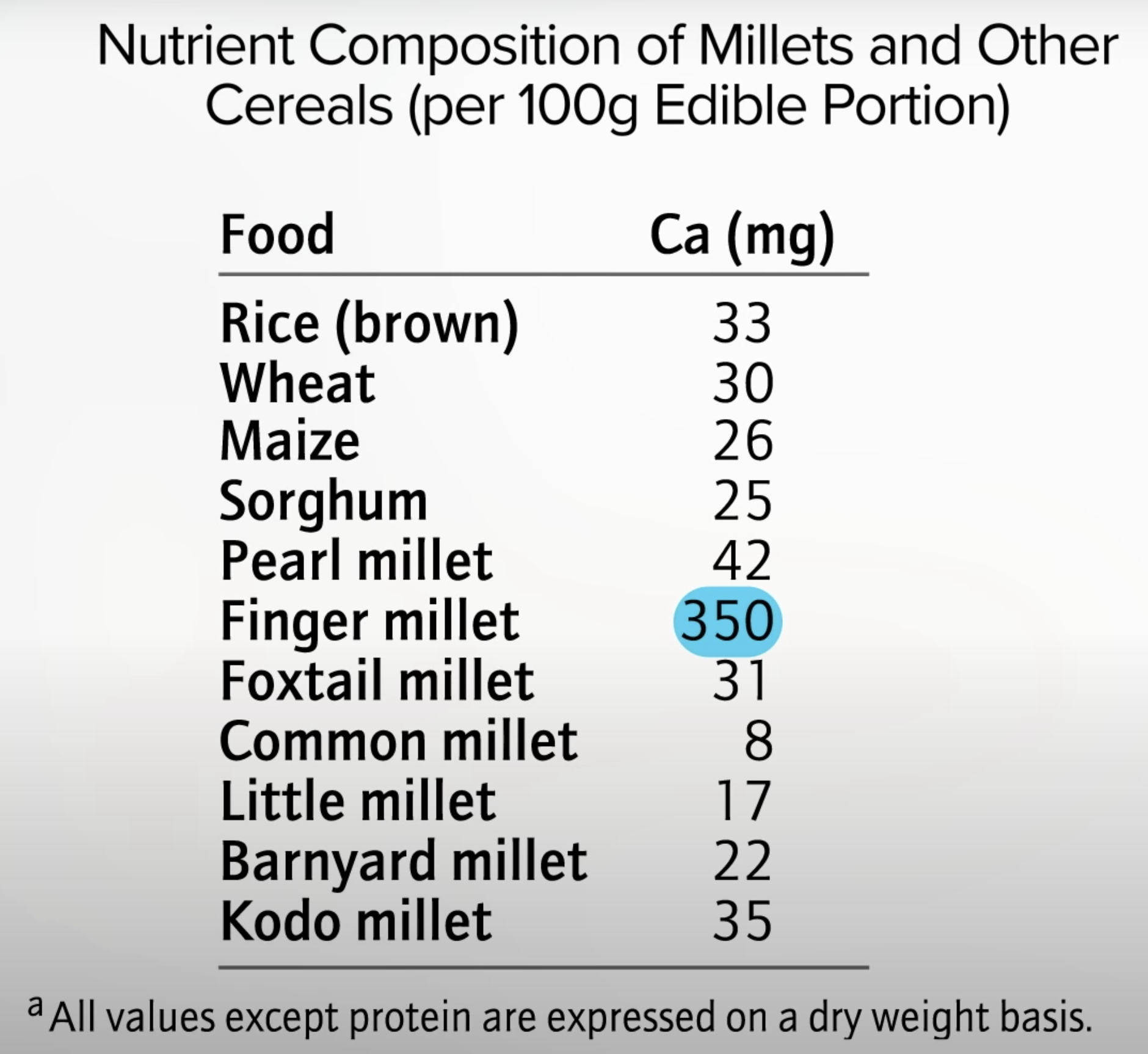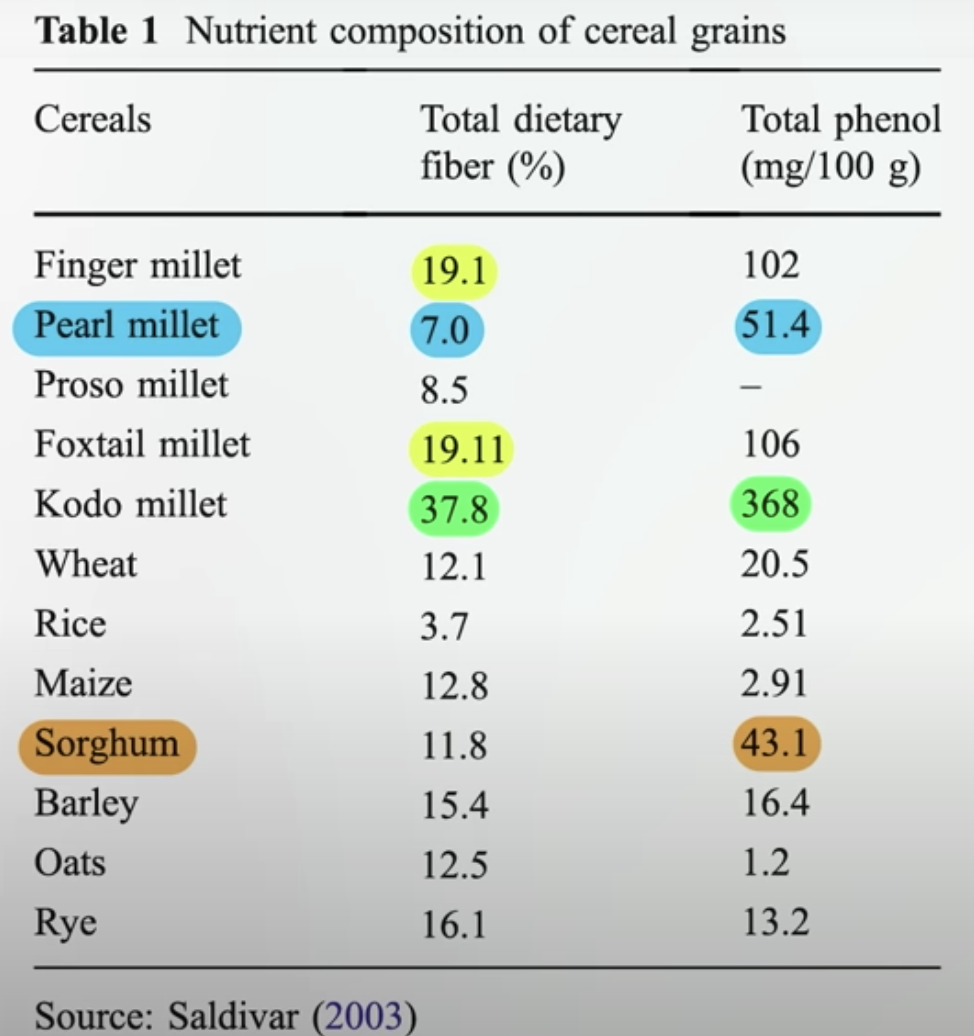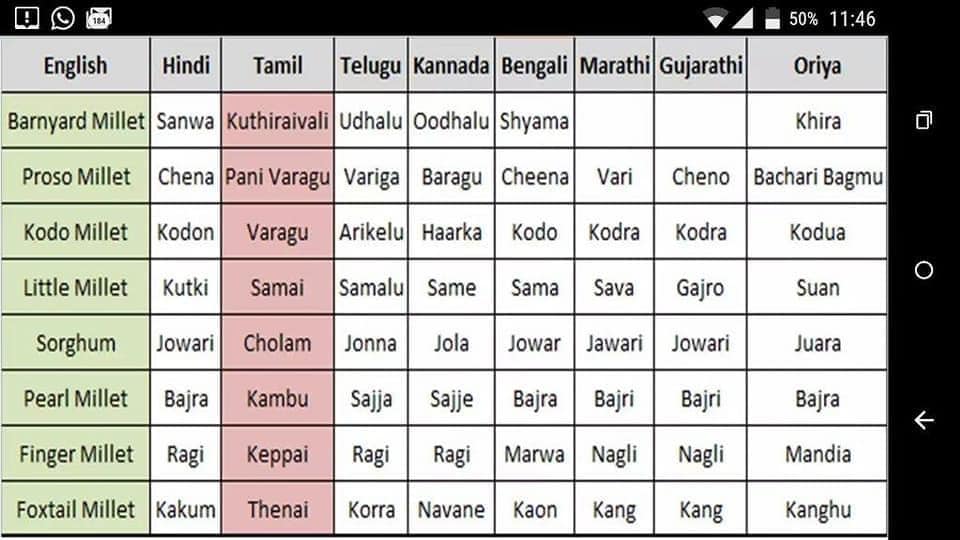(5 mins) Transcript. Dr Greger's summary: "Millet isn't the name of a specific grain, but a generic term that applies to a number of totally different plants. Which is the most healthful?"
(5 mins) Transcript. Dr Greger's summary: "What were the remarkable results of a crossover study randomizing hundreds of people with diabetes to one and a third cup of millet every day?"


Kodo millet is exceptionally rich in both fiber and phenols! Source: this video. The chart above also shows sorghum as a rich source of phenols.
See Iron Rich Whole Grains. Two millets stand out: little millet and pearl millet.
Hulled millets are better. Avoid pearled millet. Dr Andrew Weil's article on millets says,
The overall reasoning is similar to Barley: Hulled vs Pearled. We should buy hulled grains, not pearled, so that we get more of the 'whole grain goodness' :)
Finger millet is rich in calcium. Little Millet and pearl millet are rich in iron. Kodo millet is rich in phenols. Barnyard millet ('samai ke chawal' or 'samak ke chawal') is used in fasting; it's said to be easy to digest. What about proso millet and foxtail millet? What are some special properties in them? If you know, please send me an email. Thanks!

 Instagram
Instagram YouTube
YouTube
